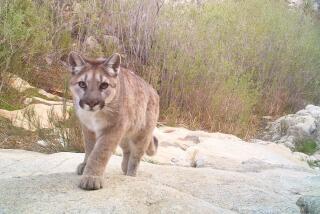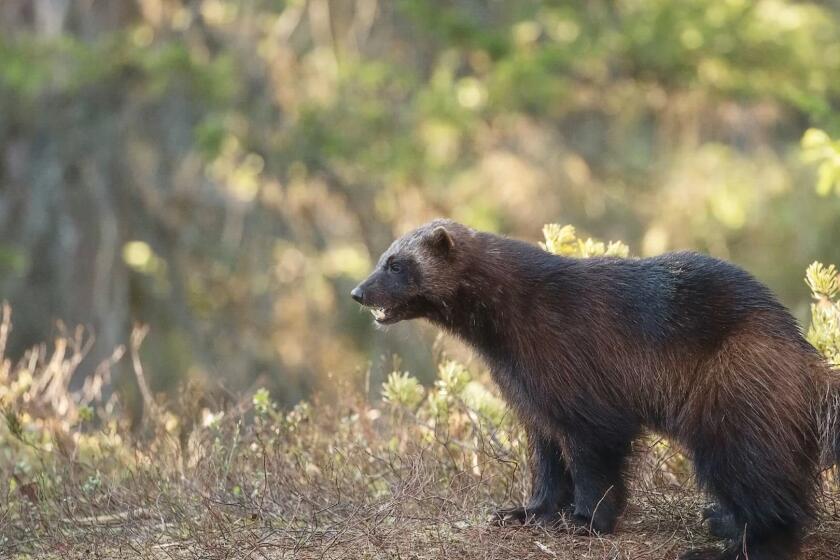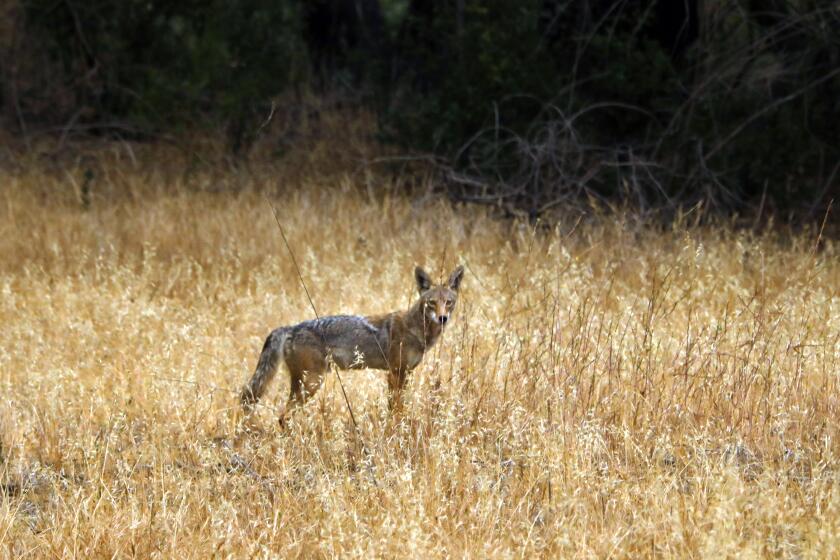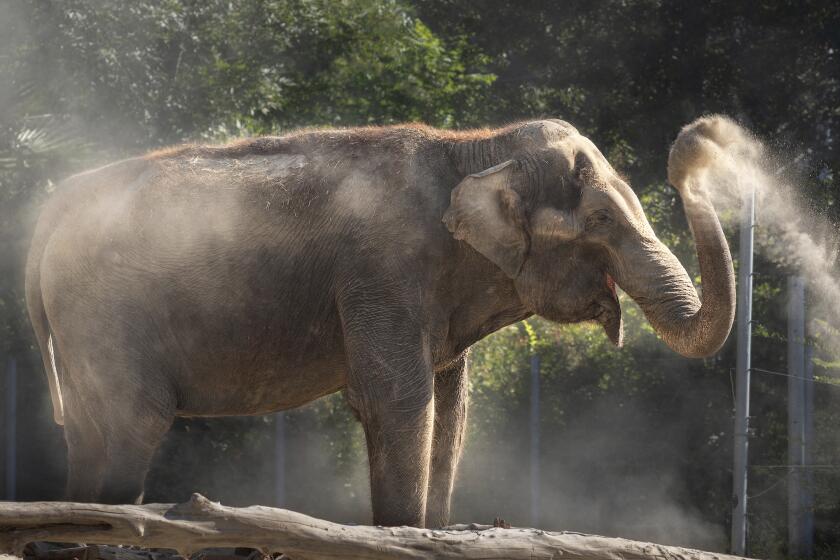Alaska Scales Back Plans for Wolf Kill : Wildlife: Revised proposal for building up caribou herd remains controversial. Animal rights activists threaten to renew calls for a tourist boycott.
Although passions remain inflamed, the state of Alaska announced plans Tuesday to kill 75 to 150 wild wolves beginning this fall in an effort to rebuild one of its troubled caribou herds for hunters.
The proposal is a scaled-back version of a wolf-kill plan offered last winter that touched off international protests by proponents of wildlife.
Still, the New York-based Fund for Animals responded by announcing that it was considering reissuing its call for an international tourism boycott if Alaska persists with its plan.
Meat and sport hunters in Fairbanks and Anchorage describe the wolf kill as “predator control,” and they note that the wolf is not endangered in Alaska. Animal rights groups label it as a needless slaughter of a highly social animal that now numbers about 7,000 in the state.
For much of its modern history, Alaska has tried various means of keeping down the wolf population in order to build up game herds, only to face increasing outrage from Americans in the lower states. The latest chapter of the saga began last winter when the state adopted a plan to deploy helicopter sharpshooters to kill 300 to 400 wolves each year for five years over vast areas of the state.
Under the threat of a tourist boycott, however, state officials shelved that idea. They were worried about tourists who were in the midst of planning their summer vacations. State Fish and Game Commissioner Carl Rosier promised at the time that there would be no state-sponsored wolf kill in 1993, either from the air or from the ground.
The new plan comes when most tourists are locked into their vacation plans. And it runs counter to Rosier’s pledge, although the commissioner again emphasized that there would be no aerial shootings this year or in 1994.
The area of the state where wolves would be trapped, snared and shot on the ground also would be reduced under the new proposal to a 200-square-mile region southwest of Fairbanks.
In that area, the caribou population has decreased from 10,700 to an estimated 4,500 over five years, even though hunting has been prohibited there since November, 1991, state officials said. Caribou populations normally fluctuate wildly up and down, but hunters argue that wolves can prevent the rebuilding of a herd for long periods of time.
Deputy Fish and Game Commissioner Mckie Campbell said the new kill would be accomplished by state game wardens and a lengthening of the public trapping season. Ordinarily, trappers kill about 1,000 wolves a year in Alaska to supply the fur trade. Whether a depressed market could absorb more pelts now is open to debate.
The new plan is to be presented for approval to the state Game Board in Fairbanks later this month. The killing of wolves would begin after the first heavy snow of the year, and thereafter “progress will be judged year to year,” Campbell said.
Wayne Pacelle of the Fund for Animals called the proposal a betrayal of promises made previously by the state.
“I hope this serves as a clarion call to the people that the state of Alaska is deadly committed to killing wolves, and we have to stop it,” Pacelle said. “We will seriously entertain the idea of resuming our boycott of Alaska.”
The plan also did not please hunters, who consider putting wild game on the table to be one of the important cultural traditions of the state. Many Alaskans, urban and rural, regard themselves as dependent at least in part on caribou and moose meat.
“I don’t think hunters will be satisfied,” said Dick Bishop, vice president of the board of the Alaska Outdoor Council. “There is some consolation that the idea of management of predator-prey systems hasn’t been thrown out . . . (but) it’s very difficult if not impossible for the state to accomplish what it wants with a modest ground-control program like this.”
Ironically, most knowledgeable wolf experts agree that if wolves have to be killed, shooting entire packs from the air is swifter, more humane and less disruptive to the remaining wolf population than the random trapping, snaring and chasing of wolves from snowmobiles. Trapped wolves can struggle for days before succumbing, and snowmobiles can run the animals to exhaustion.
But many political leaders believe that the public cannot accept aerial “gunships,” and that other methods may not stir up such criticism.
More to Read
Start your day right
Sign up for Essential California for news, features and recommendations from the L.A. Times and beyond in your inbox six days a week.
You may occasionally receive promotional content from the Los Angeles Times.






